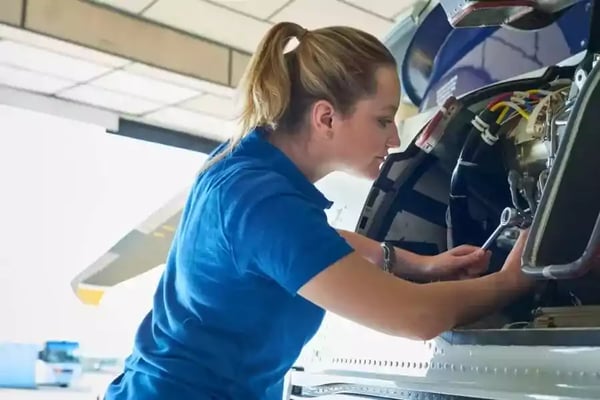In the fast-paced world of aviation, staying ahead of the curve is not just an advantage; it is a necessity. For Original Equipment Manufacturers (OEMs) in the aviation industry, the advent of automated, frequent data flow from airline customers is revolutionizing how they operate, innovate, and interact with clients. This article delves into the myriad benefits of availability of asset data, particularly for key players such as airframe, engine, landing gear, and component OEMs. For a review on the two different pipelines needed to enable data flow of maintenance system data and operational data see the related article in a previous publication: Digital Thread maturity in aircraft operations: The OEM perspective.
.jpg?width=778&height=497&name=iStock-636423420%20(1).jpg)
Enhancing Value of the Asset Management System Data
Automated data delivery greatly improves the data in the asset management system of the OEM. More frequent data refreshes, granular data collection, and automated validation tools ensure high data quality, keeping all stakeholders updated with the most current and accurate information. This not only improves operational efficiency but also decision-making processes across the board. End-users of the asset management system reap significant benefits from improved data quality. Downstream users of the asset management system include, but is not limited to, those listed in the rest of this article.
Fueling R&D and Competitive Edge
In an industry where innovation is key, the continuous inflow of real-world performance data is invaluable. This data informs R&D efforts, leading to advancements in engine design and functionality. Such innovation keeps OEMs competitive and at the forefront of technological advancements.
Proactive Maintenance through Health Monitoring Programs
The heart of any successful aviation operation lies in its maintenance protocols. Automated, real-time data empowers OEMs to implement more effective Health Monitoring (HM) programs. This proactive approach in maintenance, including Engine Health Monitoring (EHM), ensures that potential issues are identified and addressed promptly, significantly reducing downtime and bolstering safety. By combining maintenance history with full flight sensor data, OEMs gain a comprehensive understanding of an asset's performance and operational history.
"This proactive approach in maintenance, including Engine Health Monitoring (EHM), ensures that potential issues are identified and addressed promptly, significantly reducing downtime and bolstering safety."
Streamlining Power-by-Hour and Enhancing Reporting
For engine OEMs, the integration of automated data collection is reshaping the power-by-hour model. By accurately tracking engine usage, OEMs can bill airlines with greater precision, there by reducing billing discrepancies and disputes. This automation not only streamlines billing but also significantly eases the reporting burden on airlines and cuts down on manual data entry for OEMs. The result is a more efficient, transparent, and mutually beneficial relationship between airlines and manufacturers.
Refined Maintenance Work-Scoping
For engine OEMs, particularly those operating under the power-by-hour model, the ability to scope maintenance work with precision is crucial. Automated data provides up-to-date asset performance insights, allowing for more efficient planning and execution of maintenance activities. This precision not only saves costs but also improves turnaround times, enhancing overall service quality.
Forecasting Maintenance and Optimizing Logistics
For those OEMs that provide or manage maintenance for the assets, the accuracy and timeliness of automated data are pivotal in improving the medium- and long-term forecasting of maintenance need sand financial planning. This assists OEMs in budgeting, resource allocation, and making strategic decisions that align with both current and future market dynamics.
Automated data plays a critical role in predicting the need for spare parts. By optimizing inventory levels, OEMs can mitigate the risks of part shortages or excess stock. This not only streamlines the supply chain but also reduces costs associated with urgent sourcing of parts, thereby enhancing operational efficiency.
Conclusion
The integration of automated daily validated data into aviation OEM systems marks a new era in the industry. It enhances operational efficiency, customer service, and strategic decision-making while opening doors for innovation and growth. As the aviation world continues to evolve, embracing this data-driven approach will be crucial for OEMs aiming to soar to new heights in a competitive and dynamic market.
Transform your aviation operations with Aviadex.io, the ultimate data exchange and integration service.
Built on years of aerospace expertise, our platform empowers aviation industry operators to harness intelligent, data-driven solutions for seamless collaboration and efficiency. Embrace the power of data and streamline your processes today!


 Henrik Ollus
Henrik Ollus
 If you are interested in knowing how you can improve your efficiency in maintenance operations, book a 30-minutes discovery call with us.
If you are interested in knowing how you can improve your efficiency in maintenance operations, book a 30-minutes discovery call with us.

